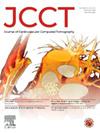Cardiac computed tomography imaging biomarkers for prediction of new-onset heart failure: Multi-ethnic study of atherosclerosis
IF 5.5
2区 医学
Q1 CARDIAC & CARDIOVASCULAR SYSTEMS
引用次数: 0
Abstract
Background
Heart failure (HF) is associated with a large socioeconomic burden. The growth of cardiac computed tomography (CT) has allowed for investigation of new applications in predicting risk of cardiovascular disease.
Objective
To determine if cardiac CT imaging biomarkers could predict new-onset HF and improve discrimination in a current HF prediction model.
Methods
Participants of the Multi-Ethnic Study of Atherosclerosis (MESA) were included to evaluate new-onset HF during a median follow-up period of 17.7 years. Cardiac CT imaging biomarkers measured include left ventricular size indexed (LVSi) and calcification of the coronary arteries (CAC), aortic valve (AVC), mitral annulus (MAC), and thoracic aorta (TAC). We evaluated if cardiac CT variables improved the 10-year risk prediction of new-onset HF by the Pooled Cohort equations to Prevent HF (PCP–HF) score.
Results
Among 6,667 MESA participants (52.7 % female), 426 events of new-onset HF occurred. Cox model analysis revealed log transformed CAC (HR 1.11; 95 % CI 1.06–1.16; p < 0.001), log transformed AVC (HR 1.06; 95 % CI 1.01–1.12; p = 0.014), and LVSi (HR 1.17; 95 % CI 1.12–1.21; p < 0.001) were significantly associated with new-onset HF. Area under the curve (AUC) discrimination of new-onset HF by the PCP-HF score was improved with incorporation of cardiac CT imaging biomarkers.
Conclusion
Cardiac CT imaging biomarkers provide anatomic risk factors that improve the prediction of new-onset HF. Coronary and valvular calcifications may signal comorbidities associated with HF. LVSi may reflect left ventricular remodeling associated with HF.
心脏计算机断层成像生物标志物预测新发心力衰竭:动脉粥样硬化的多民族研究。
背景:心力衰竭(HF)与巨大的社会经济负担相关。心脏计算机断层扫描(CT)的发展使得在预测心血管疾病风险方面的新应用研究成为可能。目的:确定心脏CT成像生物标志物是否可以预测新发心衰,并提高现有心衰预测模型的区分能力。方法:纳入多民族动脉粥样硬化研究(MESA)的参与者,在17.7年的中位随访期间评估新发心衰。测量的心脏CT成像生物标志物包括左心室大小指数(LVSi)和冠状动脉(CAC)、主动脉瓣(AVC)、二尖瓣环(MAC)和胸主动脉(TAC)的钙化。我们通过PCP-HF评分评估心脏CT变量是否改善了新发HF的10年风险预测。结果:在6667名MESA参与者中(52.7%为女性),发生了426例新发HF事件。Cox模型分析显示,对数变换后的CAC (HR 1.11;95% ci 1.06-1.16;结论:心脏CT成像生物标志物提供了改善新发心衰预测的解剖学危险因素。冠状动脉和瓣膜钙化可能是HF相关合并症的信号。LVSi可能反映HF相关的左心室重构。
本文章由计算机程序翻译,如有差异,请以英文原文为准。
求助全文
约1分钟内获得全文
求助全文
来源期刊

Journal of Cardiovascular Computed Tomography
CARDIAC & CARDIOVASCULAR SYSTEMS-RADIOLOGY, NUCLEAR MEDICINE & MEDICAL IMAGING
CiteScore
7.50
自引率
14.80%
发文量
212
审稿时长
40 days
期刊介绍:
The Journal of Cardiovascular Computed Tomography is a unique peer-review journal that integrates the entire international cardiovascular CT community including cardiologist and radiologists, from basic to clinical academic researchers, to private practitioners, engineers, allied professionals, industry, and trainees, all of whom are vital and interdependent members of our cardiovascular imaging community across the world. The goal of the journal is to advance the field of cardiovascular CT as the leading cardiovascular CT journal, attracting seminal work in the field with rapid and timely dissemination in electronic and print media.
 求助内容:
求助内容: 应助结果提醒方式:
应助结果提醒方式:


